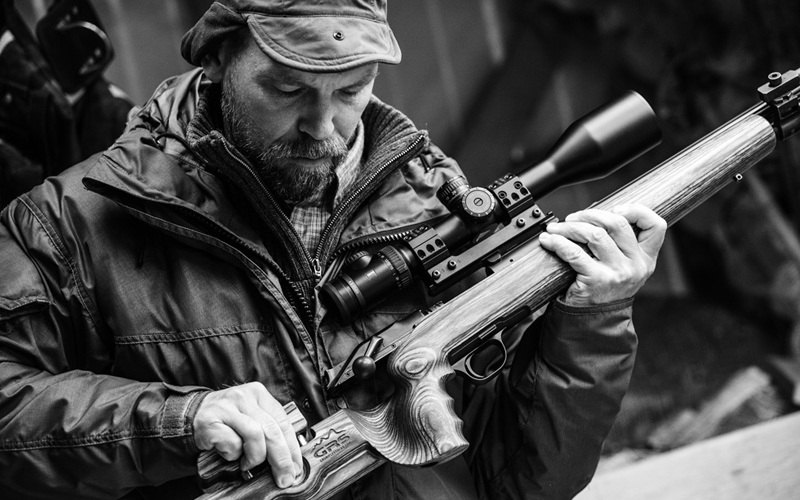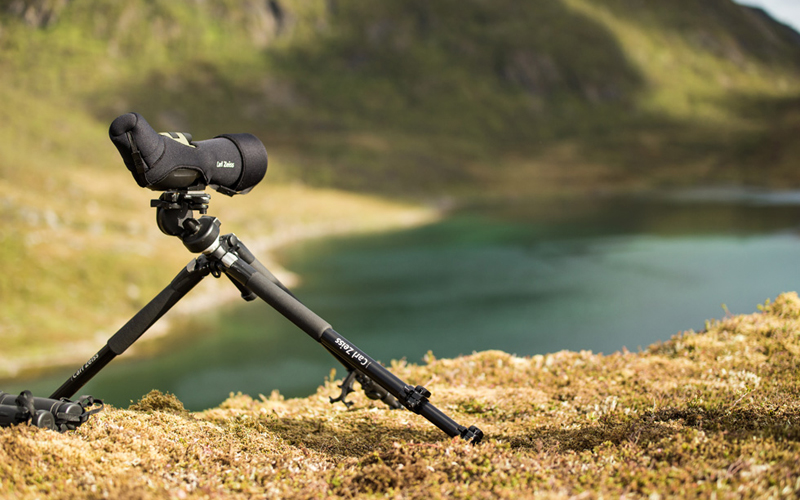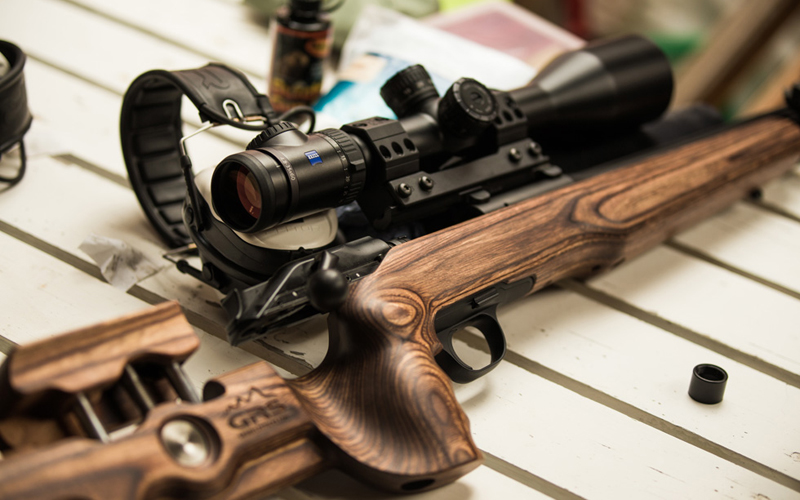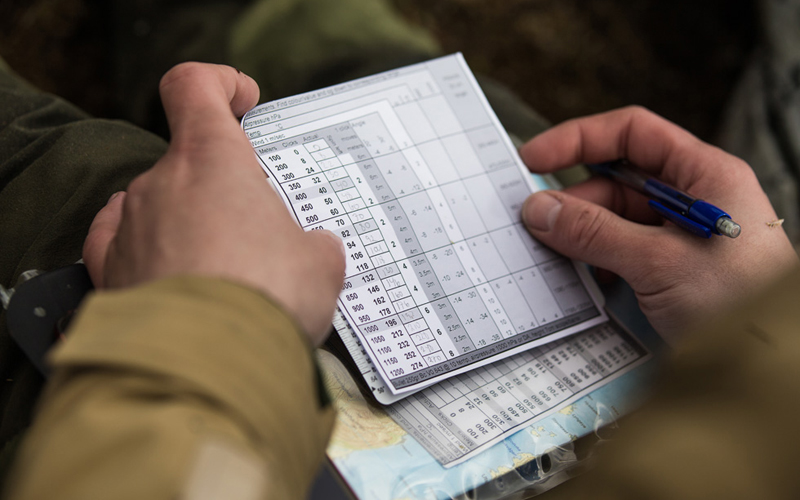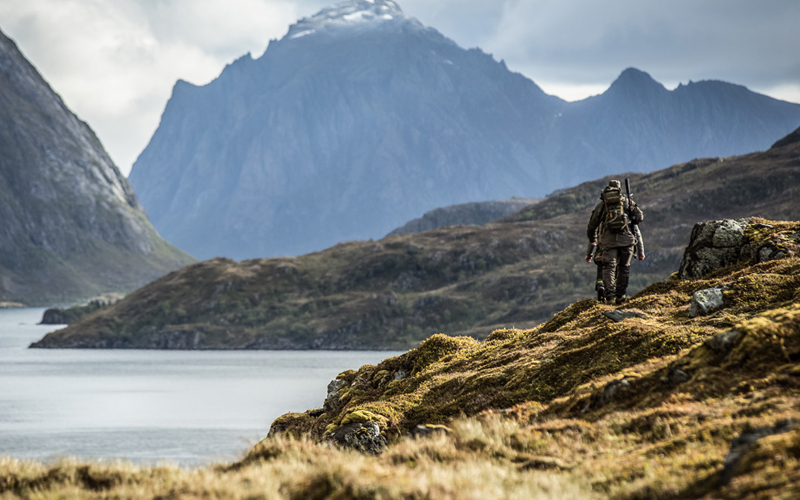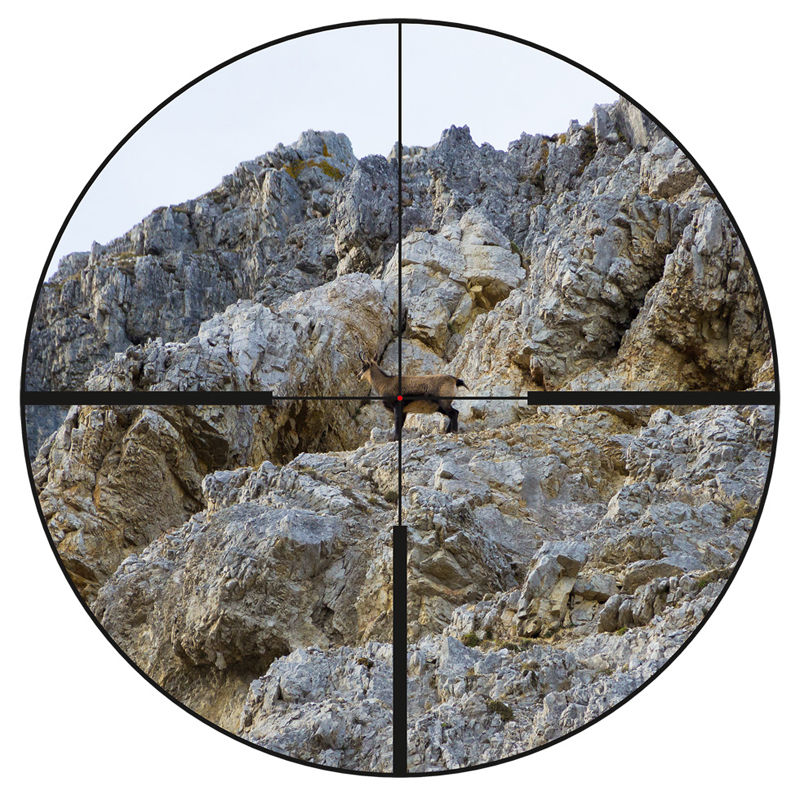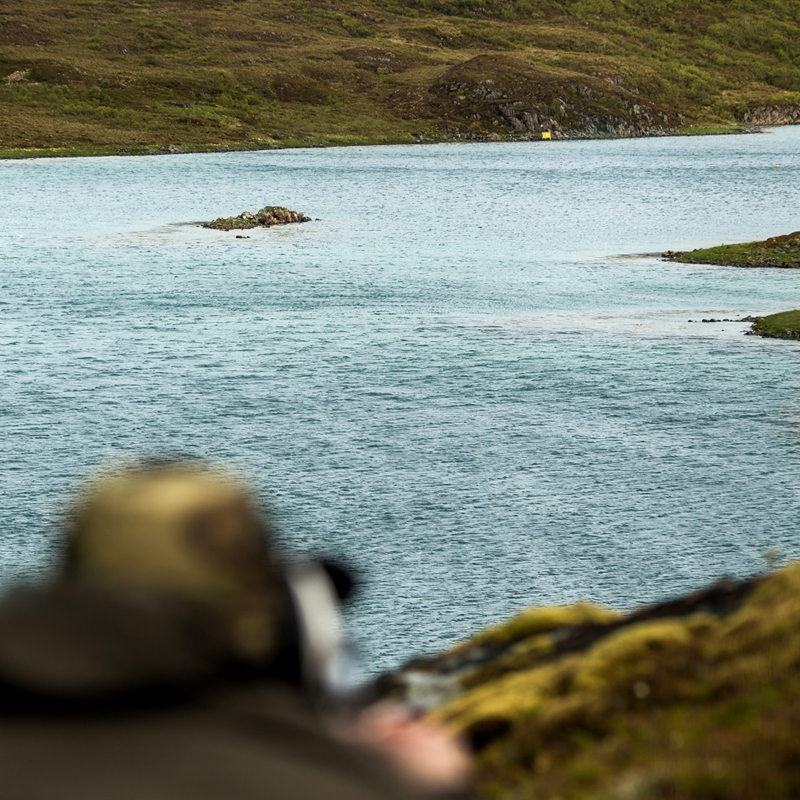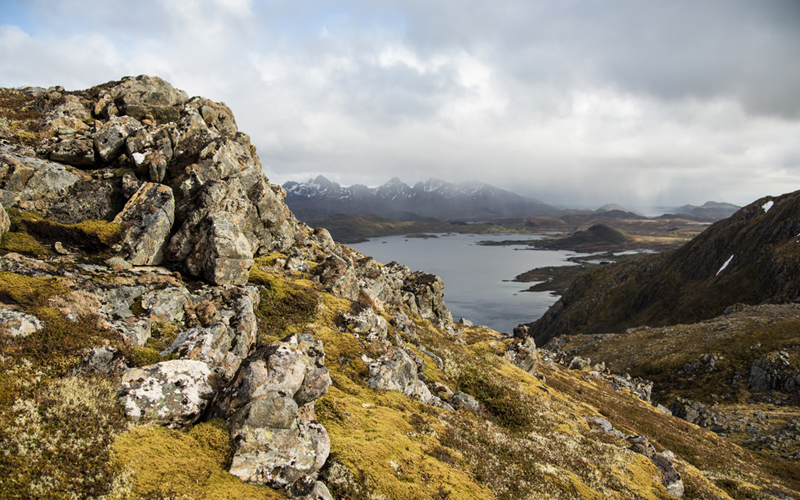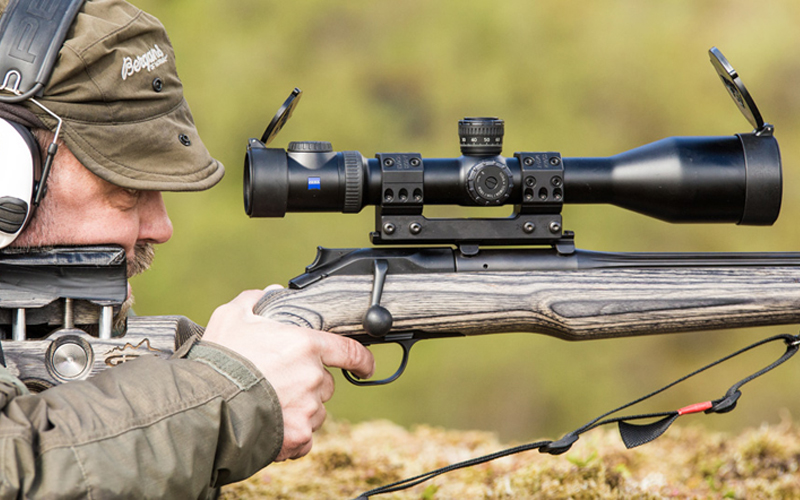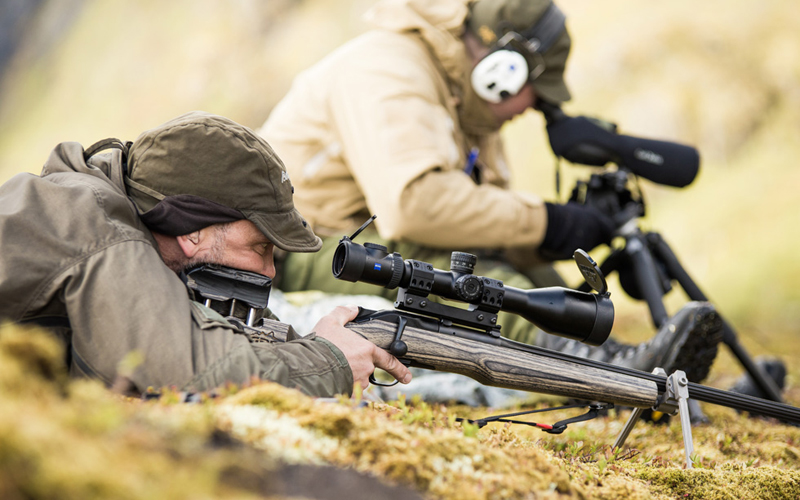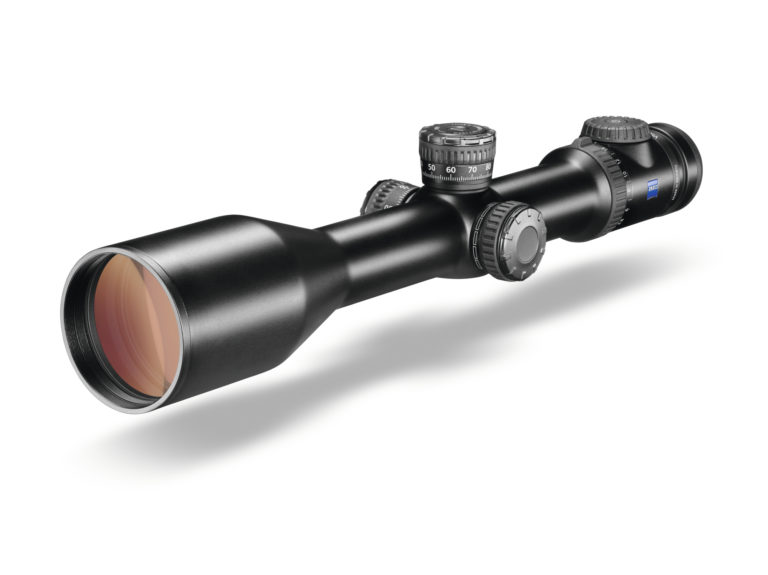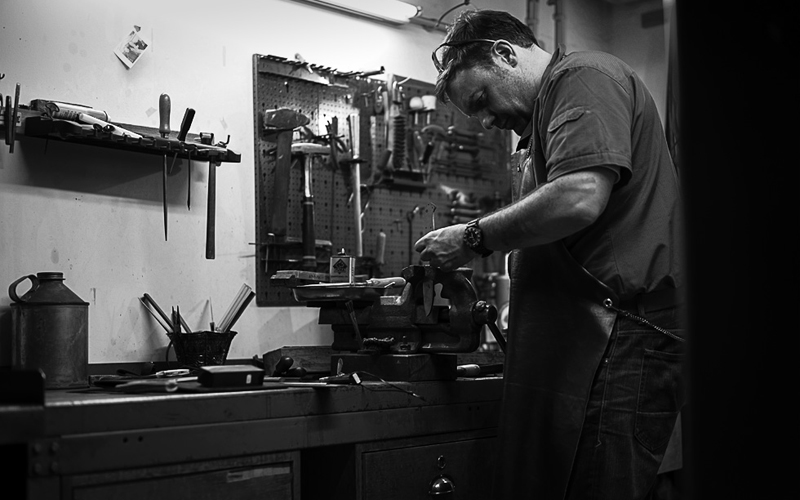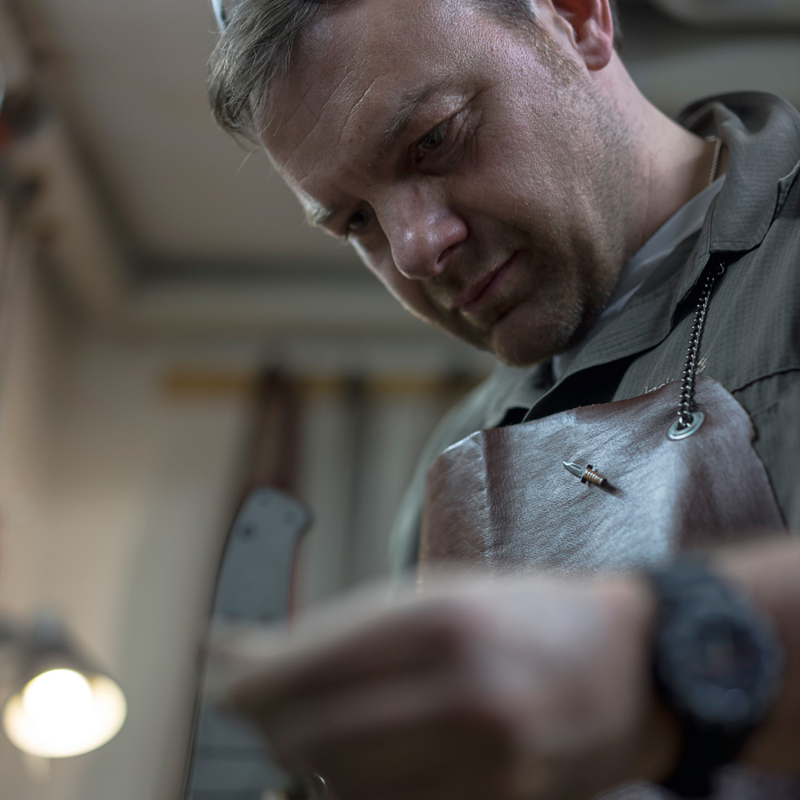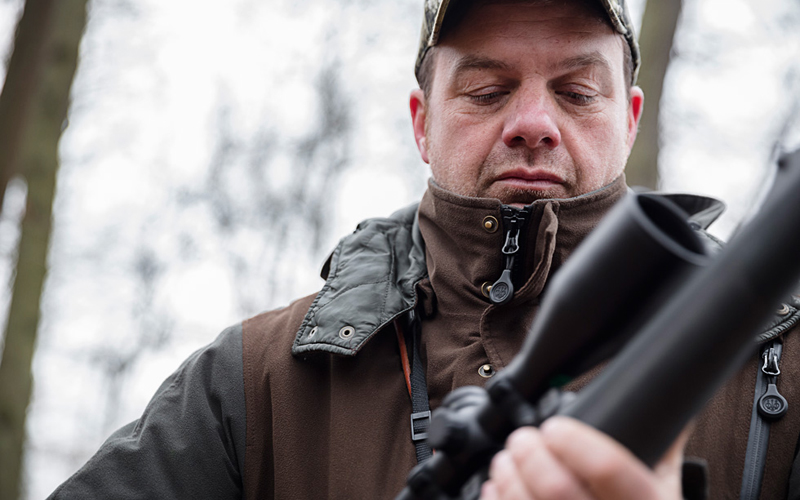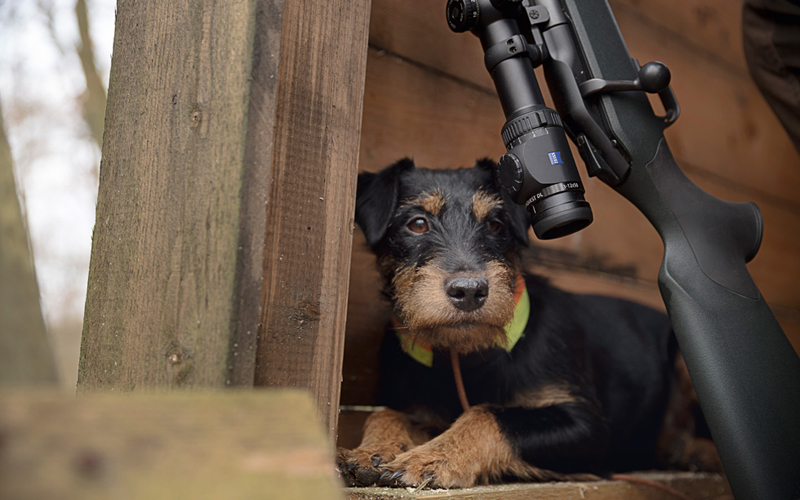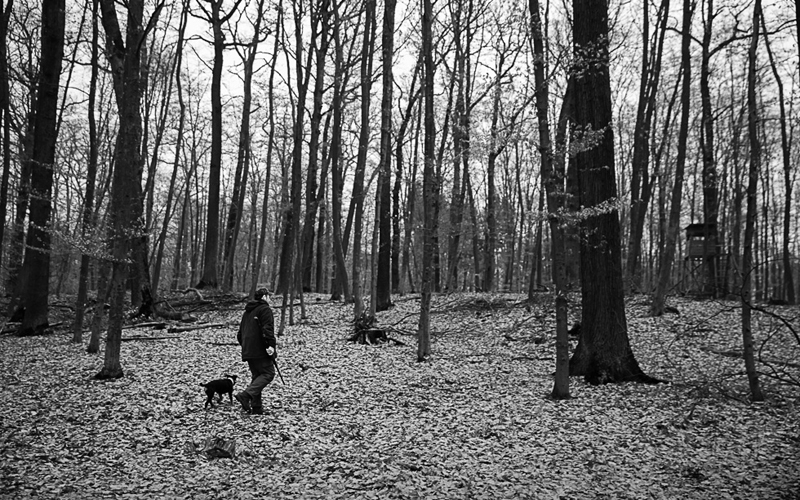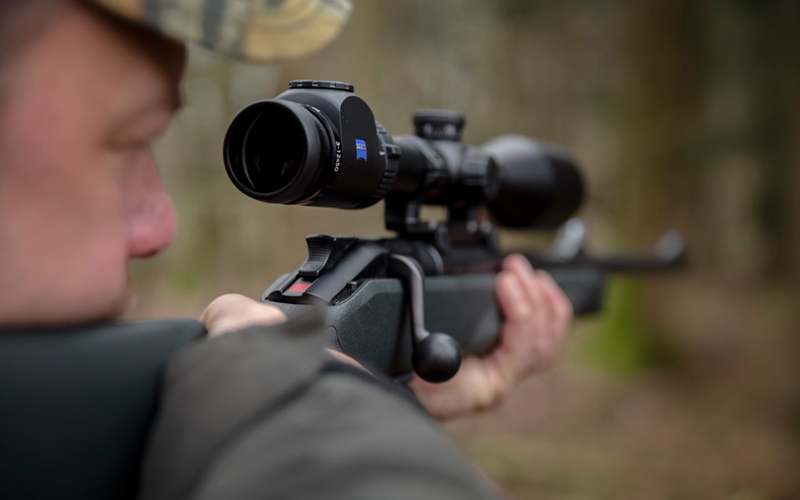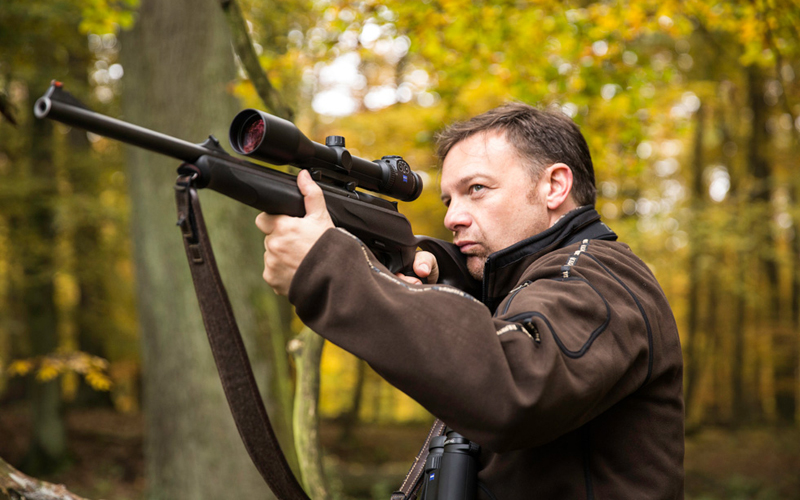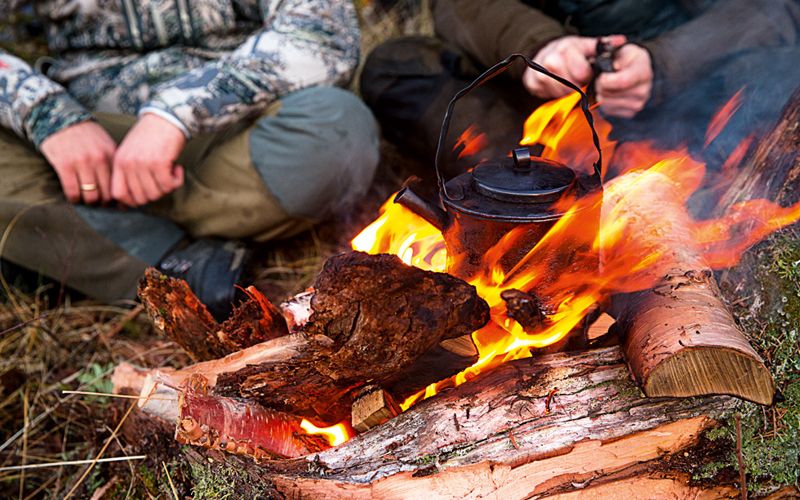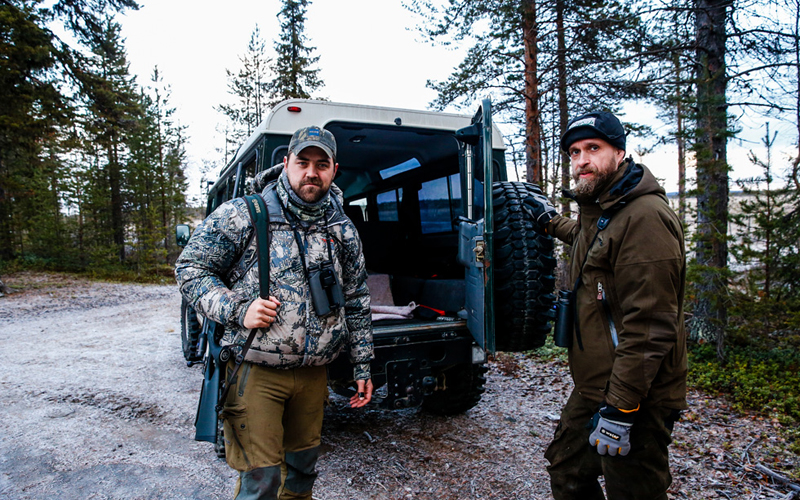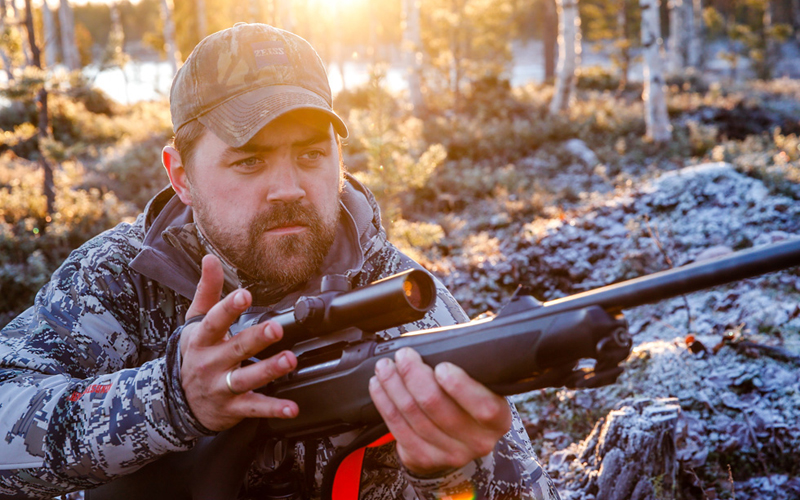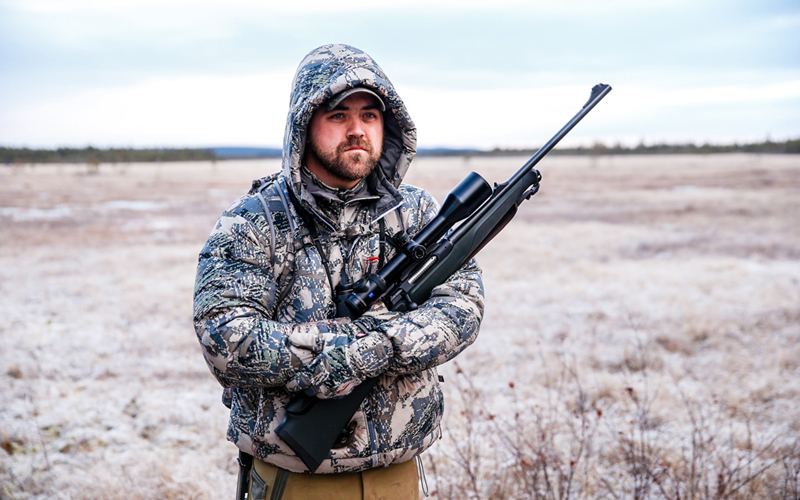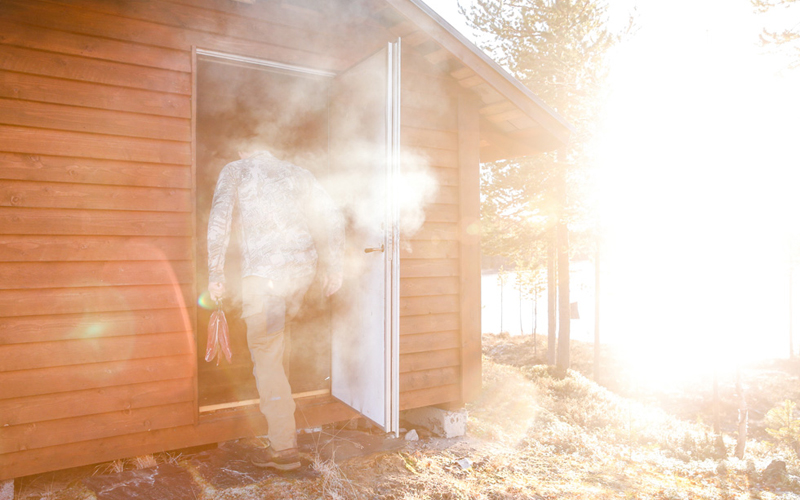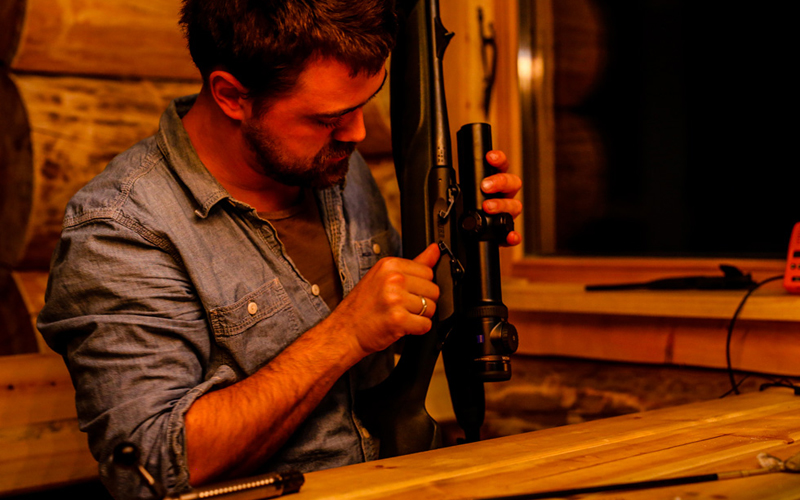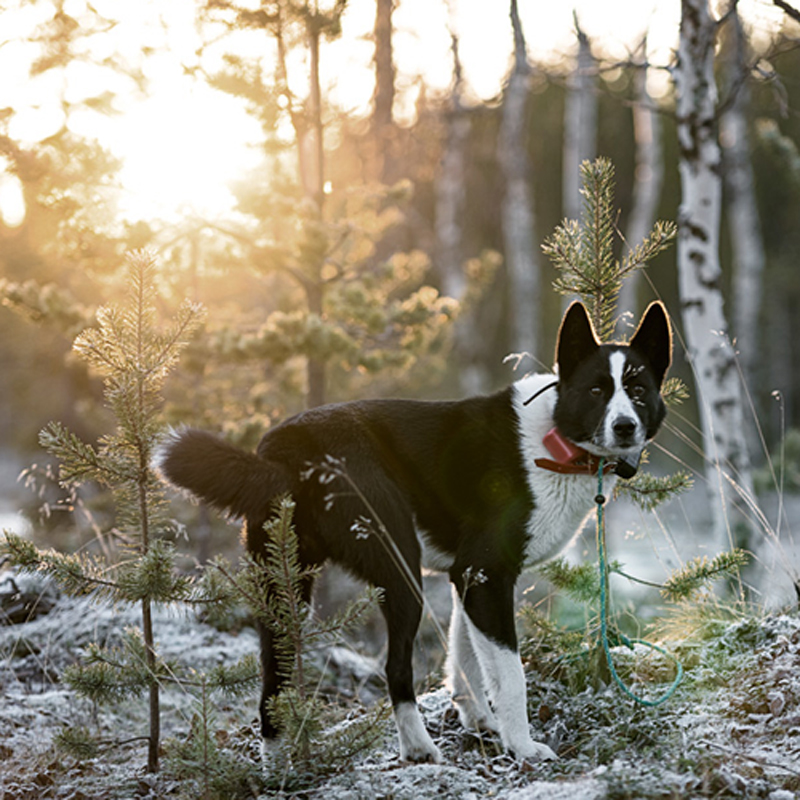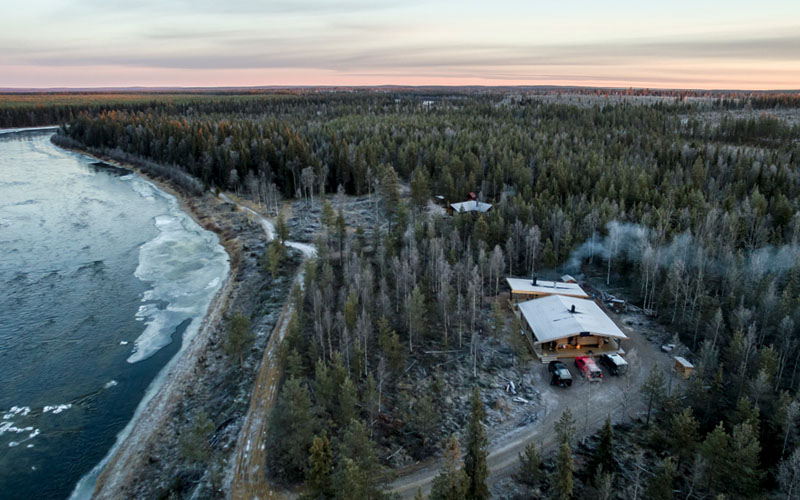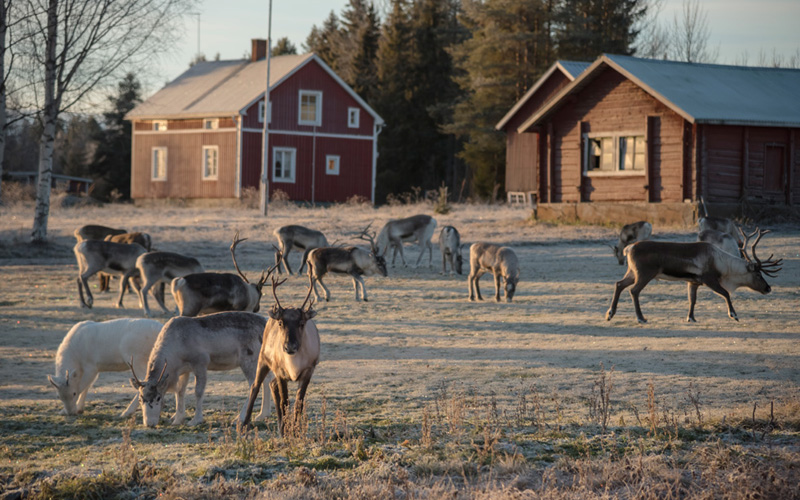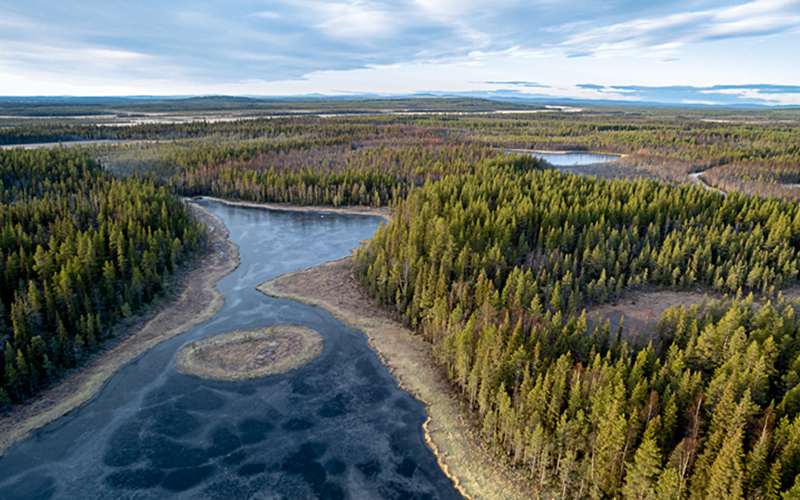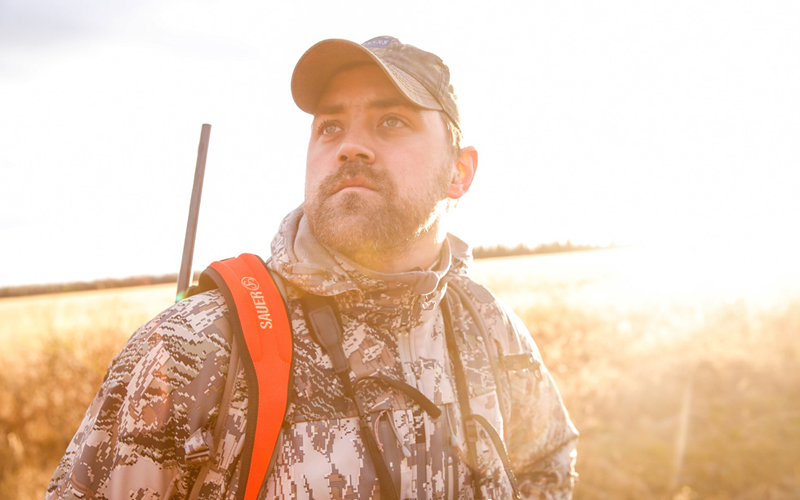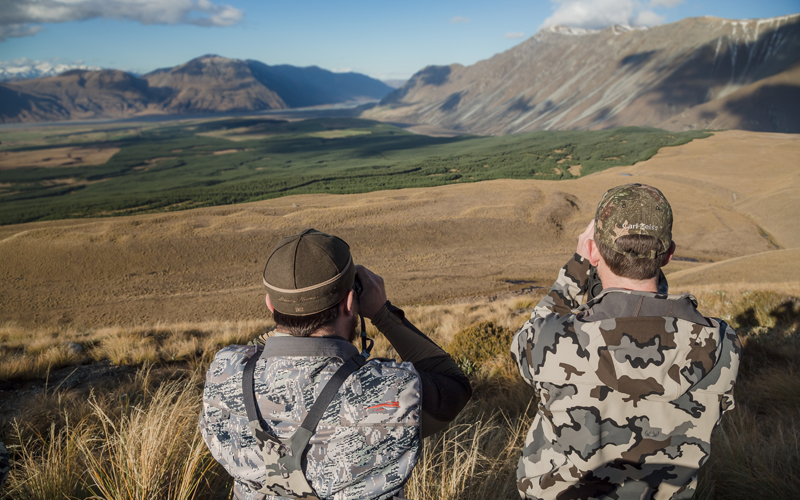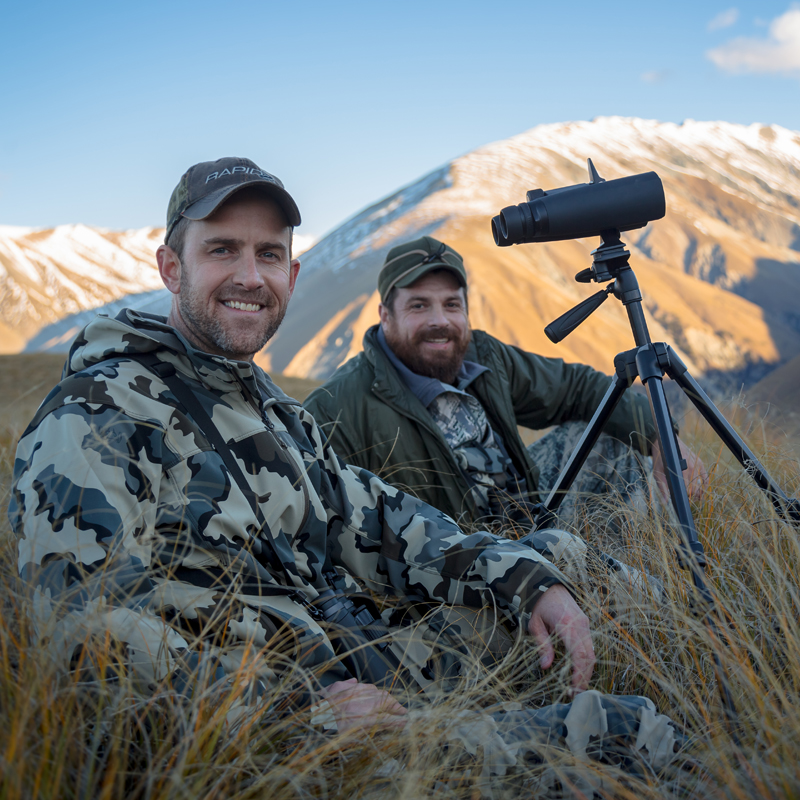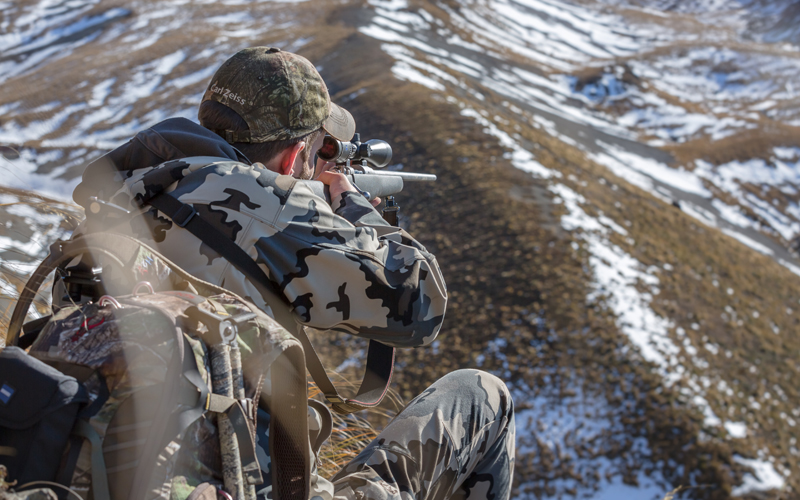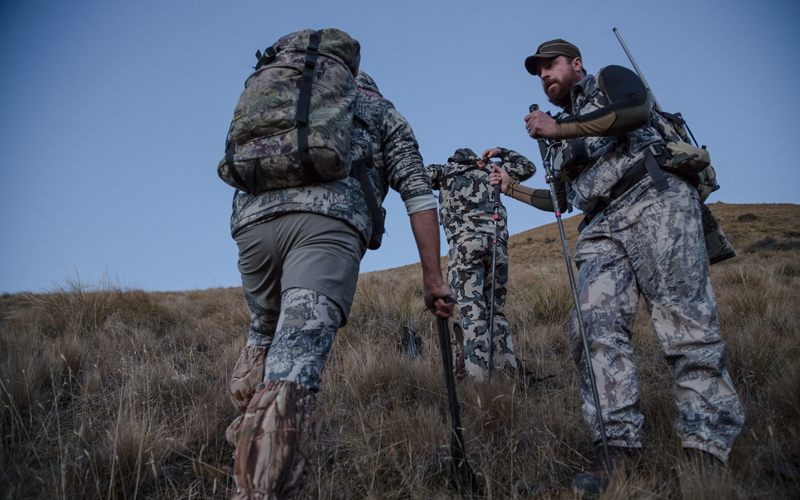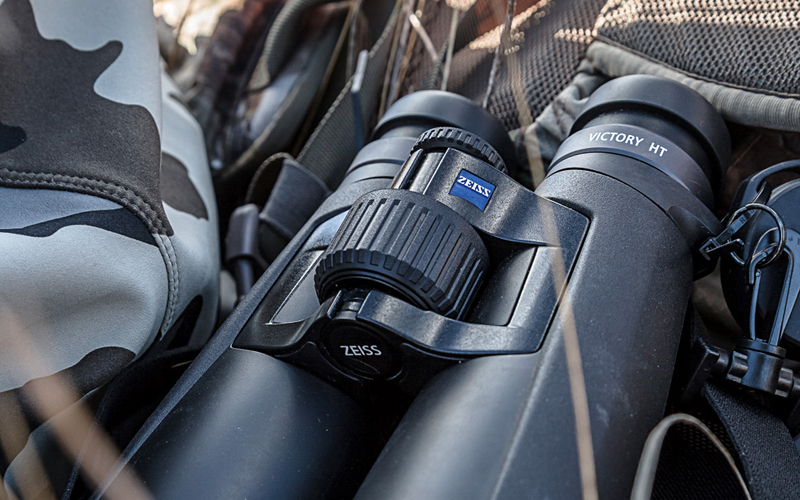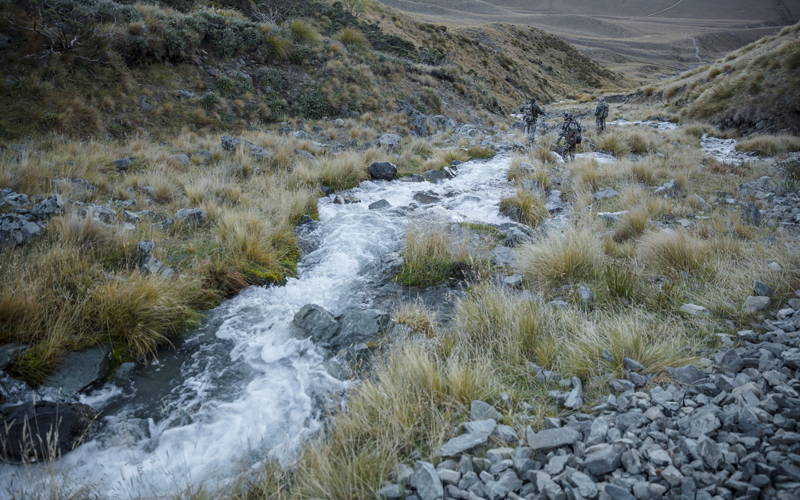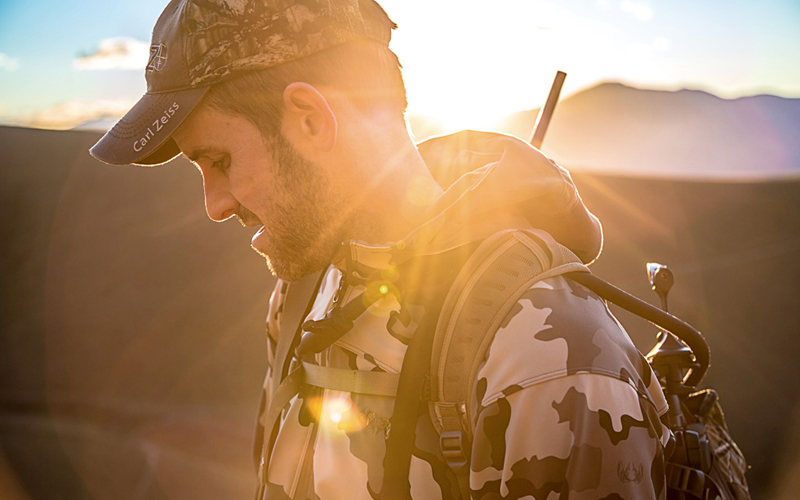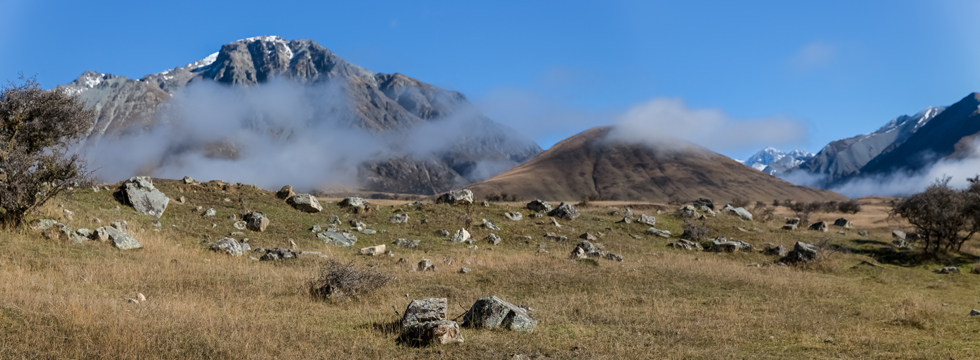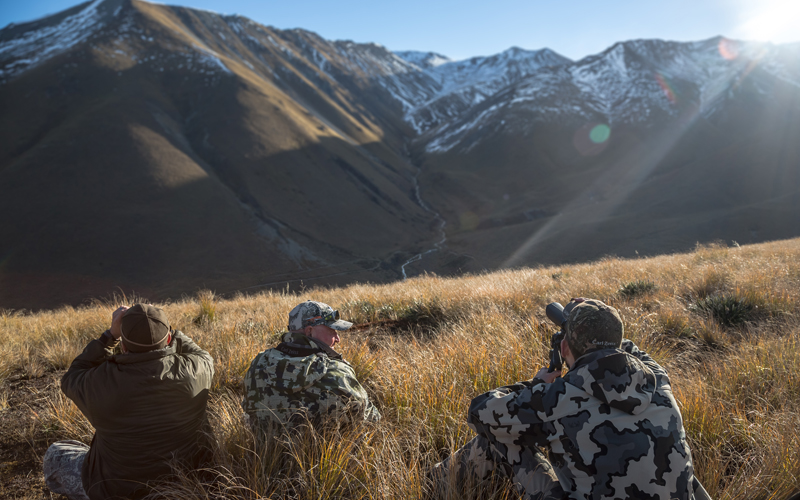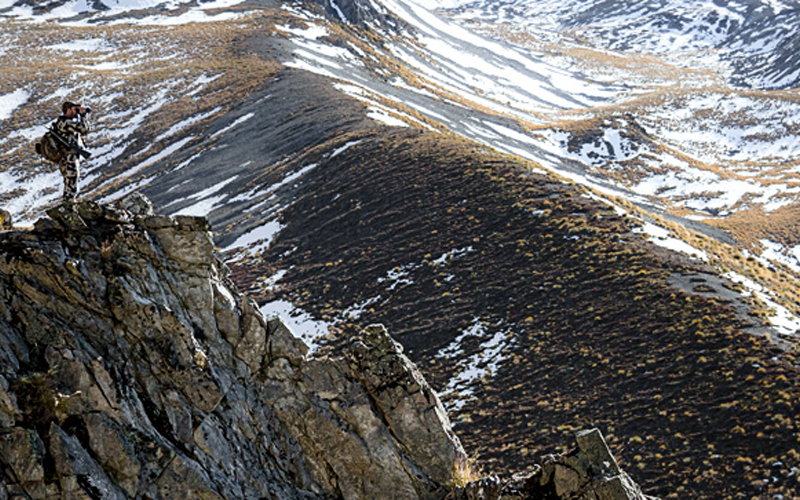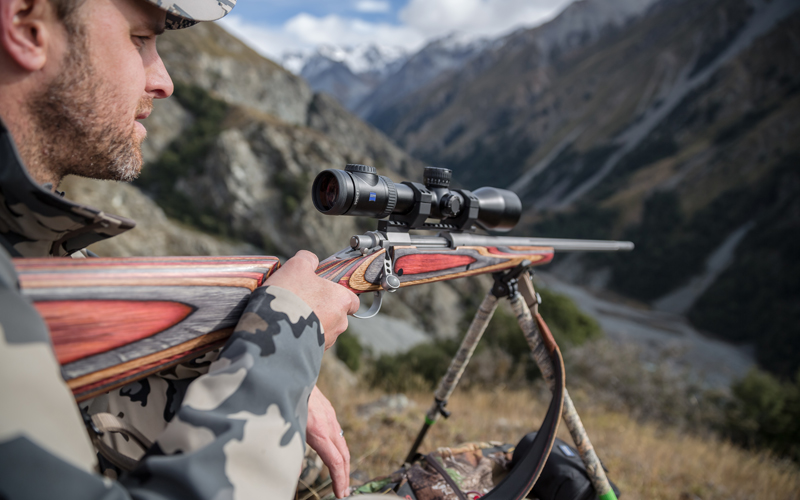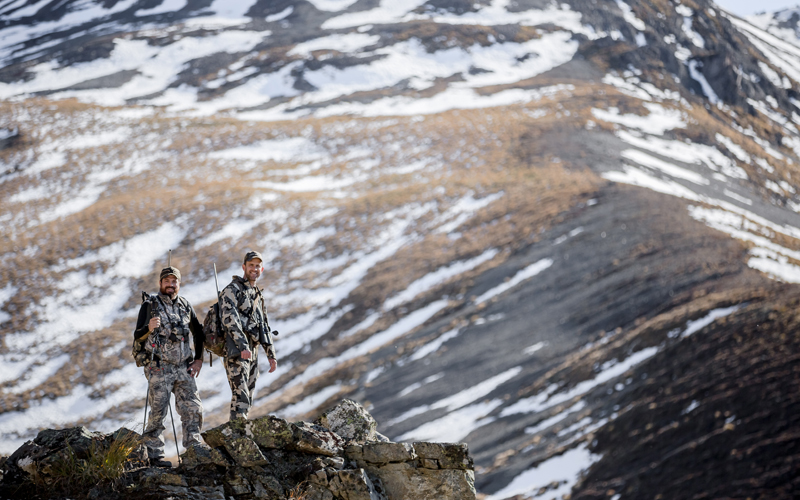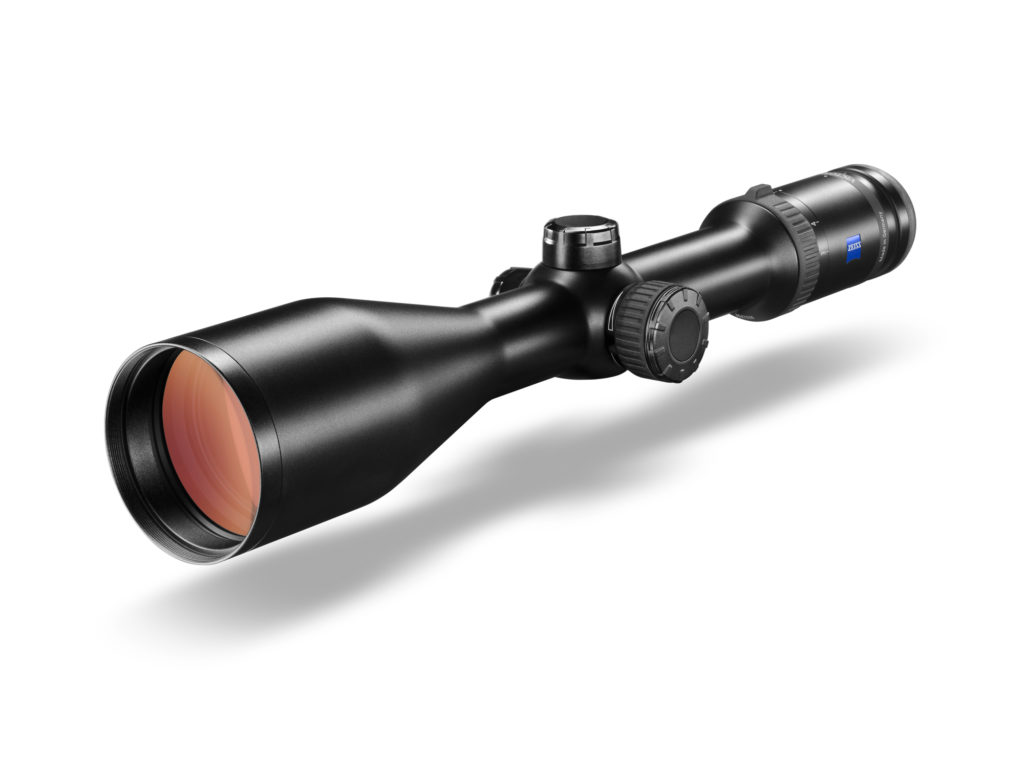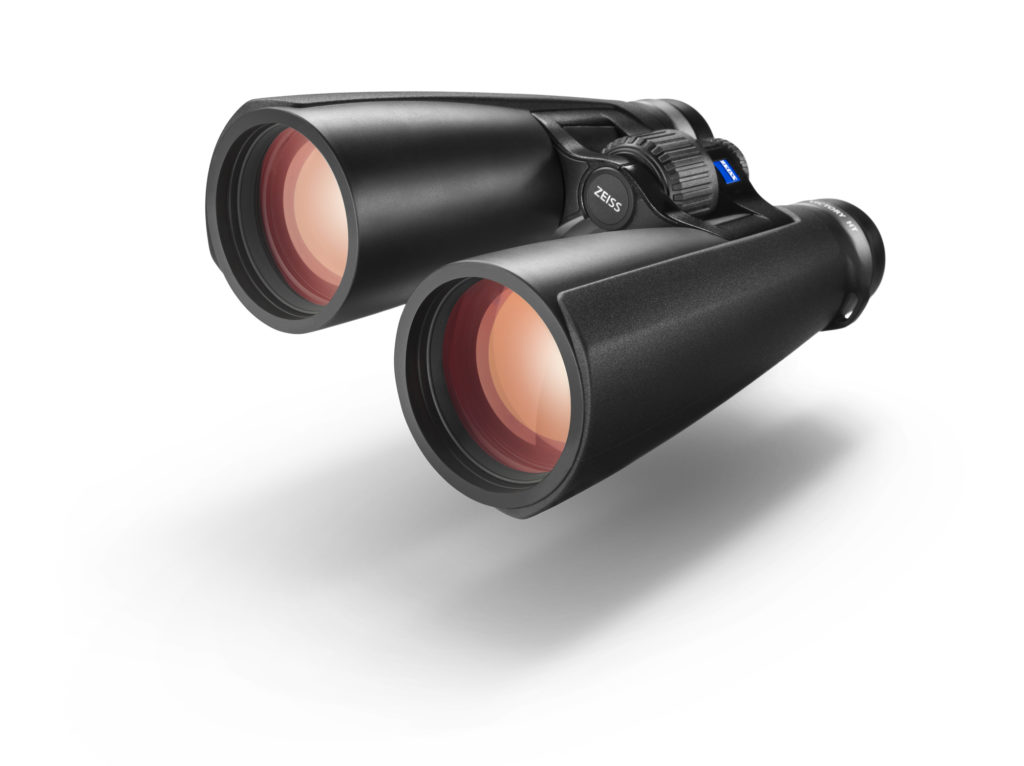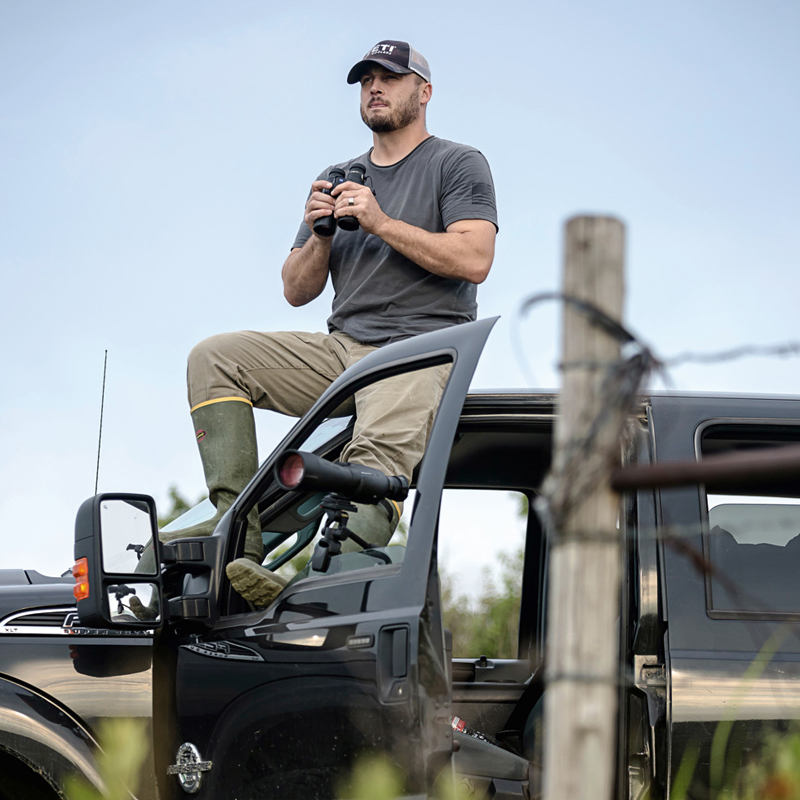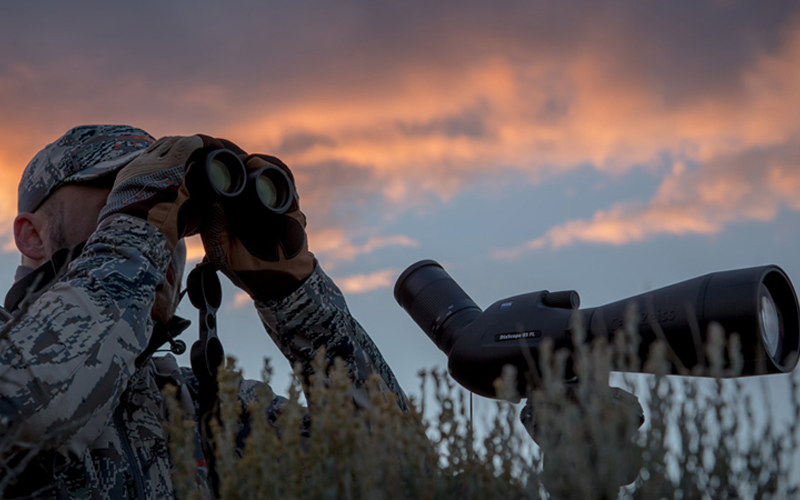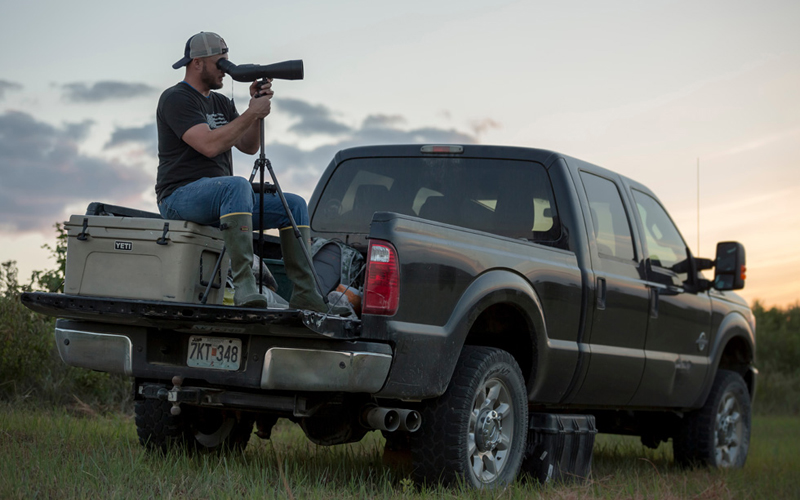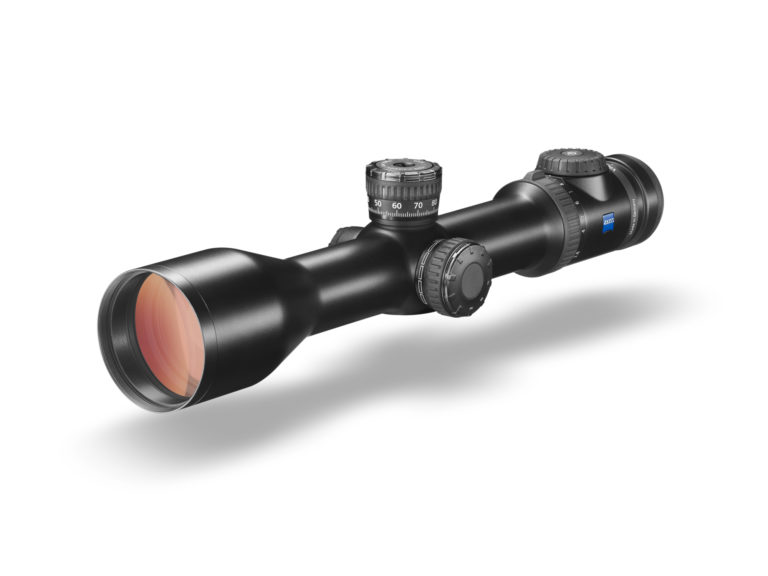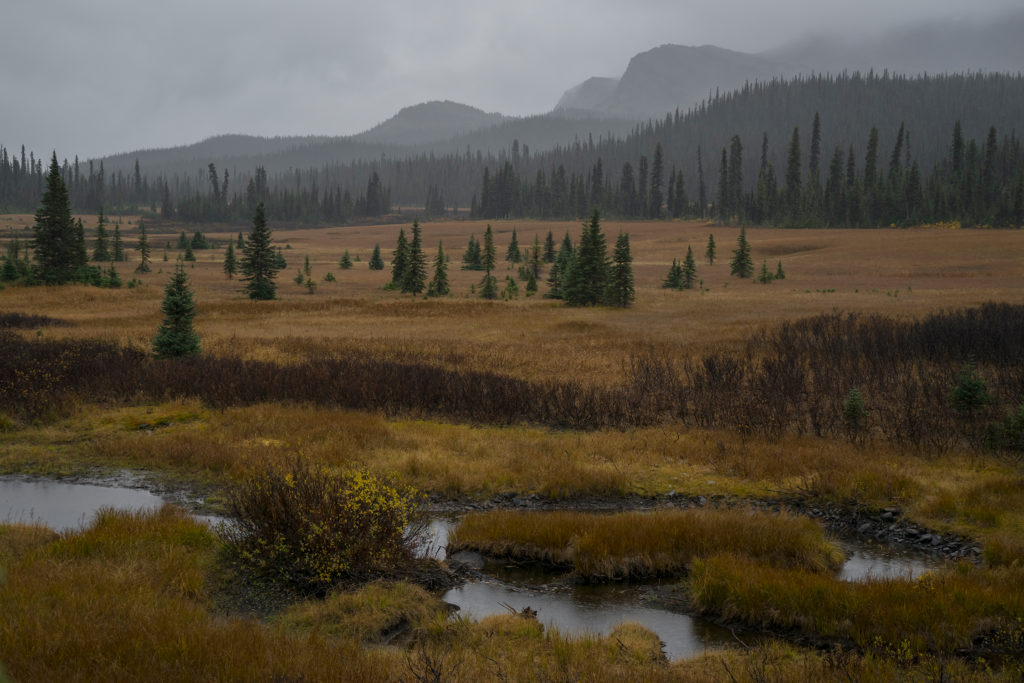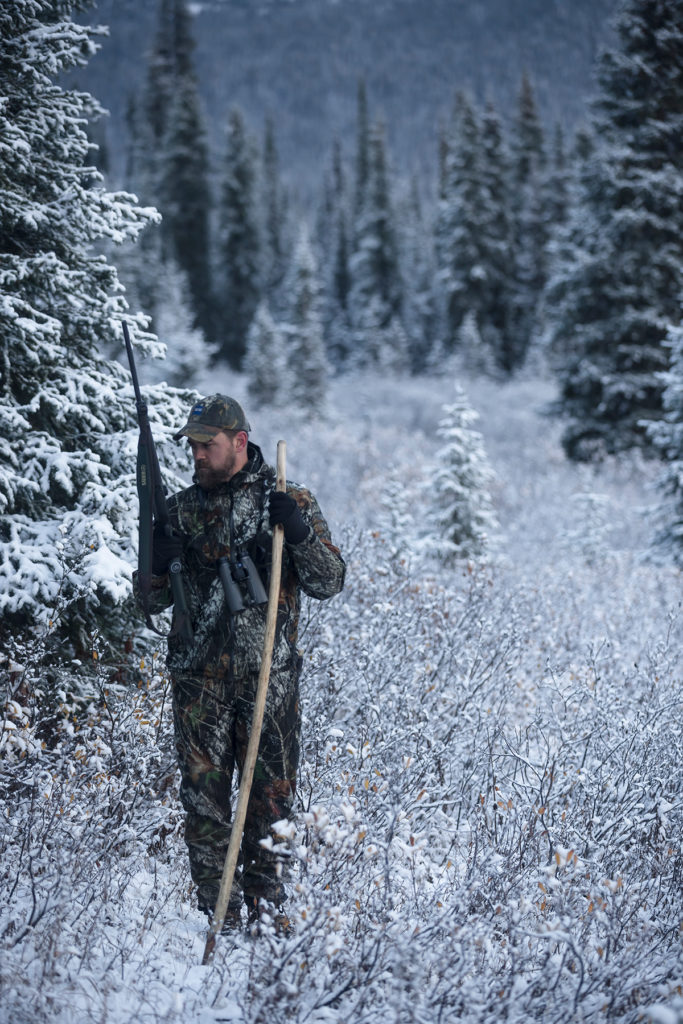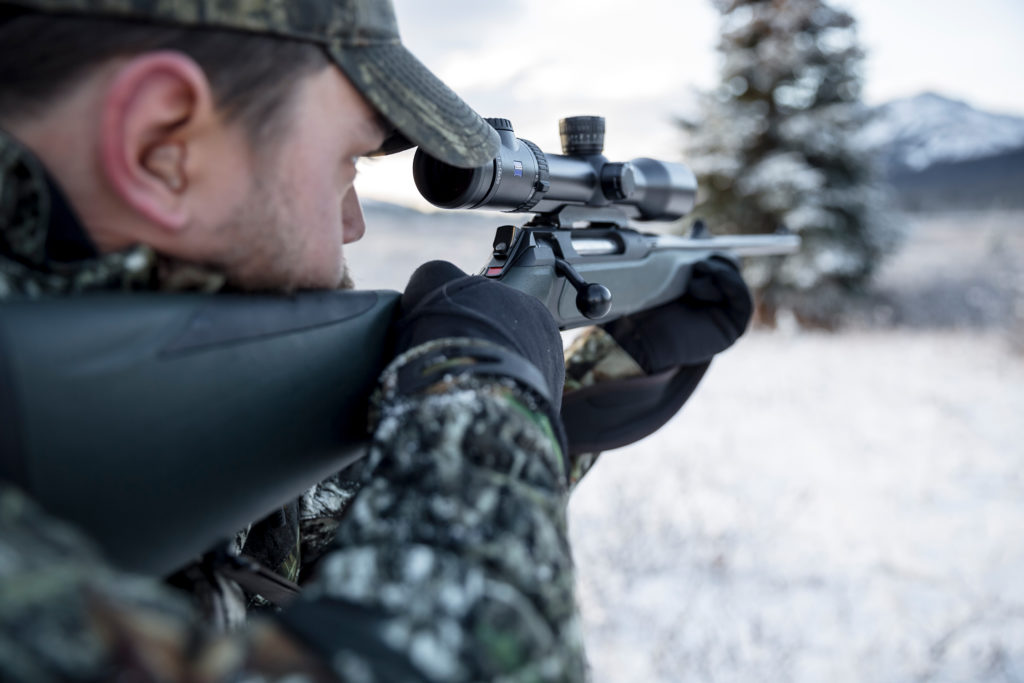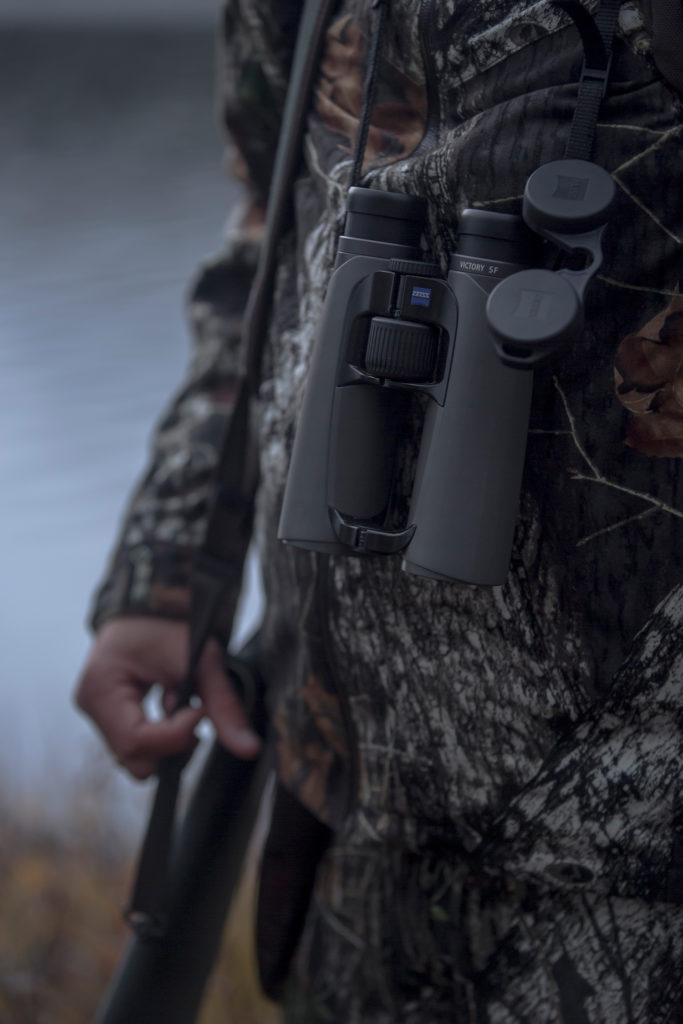Expanding the horizon at the edge of Europe
Under the guidance of the Norwegian long-range specialist Thomas Haugland, a small team of highly skilled shooters tested the limits of what is possible on the uninhabited island group of Vesterålen. Changing winds, rain, steep terrain, and distances of 500 to 800 meters challenged the hunters. In the backpack: a Blaser R8 with ZEISS VICTORY V8 4.8–35×60 and sufficient .338 Lapua Magnum ammunition. Even under these extreme conditions, the bullet drop compensation (BDC) – ASV by ZEISS showed its precision and practicability.
Bullet drop compensation (BDC) – ASV. Precision goes a long way
For most hunters, shooting at ranges over 150 meters are an exception. The BDC helps master the ballistic and professional challenge in long-range shooting situations with confidence. Those who want to consistently and accurately shoot game at long distances need to practice and perfectly match their rifle, ammunition and riflescope together. ZEISS has designed and developed the bullet drop compensation for this very purpose, to ensure a perfectly placed shot.
With the changing winds, rain and steep terrain the uninhabited Norwegian Islands are one of the most challenging hunting grounds.
Long-range shooting on the edge of Europe
Ulf Lindroth and Thomas Haugland test the limits of possibility with the ZEISS Victory V8 at the arctic circle.

Using BDC by example of ASV+
Using the BDC of ASV+, ASV LongRange or ASV Competition one first needs to choose the proper pre-engraved ballistic ring to match the caliber and ammunition. To do so simply download the free ballistic program from the ZEISS website which includes instructions on to how to calibrate properly at 100 meters.: Ballistic Calculator
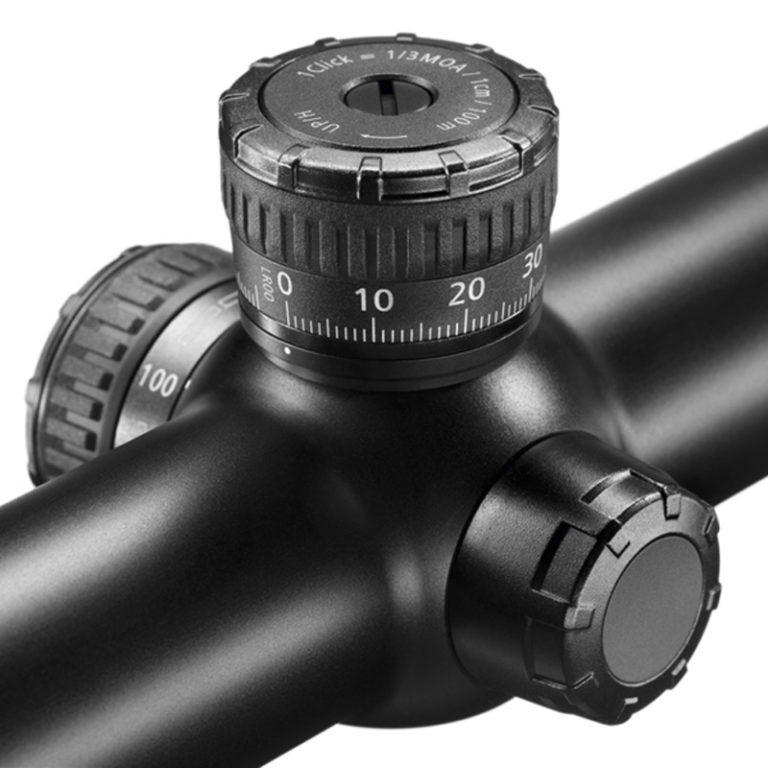
Example ASV+
In the next step, you dial the turret to the corresponding distance on the ballistic metal ring, 2 for 200 meters, 3 for 300 meters and so on.
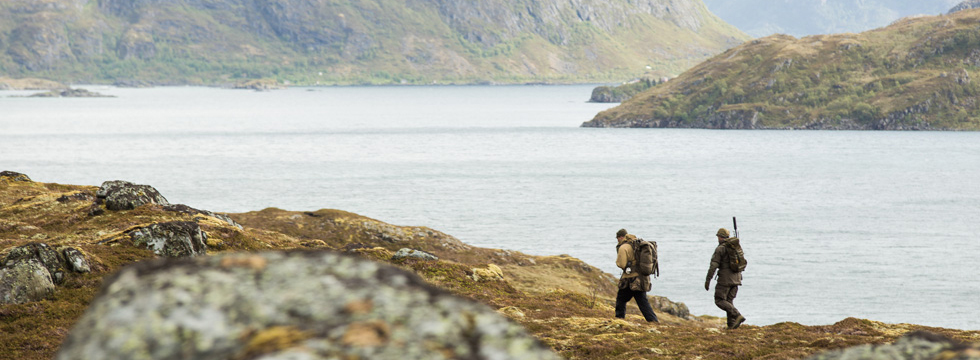
Once the distance has been chosen you simply aim at the spot and squeeze the trigger.
Shot on target
You never need to hold-over again to compensate for projectile drop over the additional distance.
Ensure a professional shot on target
The idea is to enable accurate aiming at any distance and with every projectile by being able to quickly adjust the riflescope when on target. You only need to know the distance to the target, then you can use the range references on the elevation turret to adjust for the projectile drop even over long distances. ZEISS scopes equipped with ASV+, ASV LongRange and ASV Competition come with nine pre-engraved ballistic rings. Calculating, click counting or holding over are no longer needed to ensure a perfectly placed shot on target – at any distance.
Equpiment used
Hunting Tahr in New Zealand
Hunting Knives
Thomas Nohl about his passion and family tradition
The passionate hunter Thomas Nohl turned his passion into a profession and at the same time brought a family tradition into the fourth generation.
His parents – a cutler and a goldsmith – believed that the art of making knives no longer had a future. Although the mother‘s side of the Nohls had been cutlers in Gießen for more than 150 years. So Thomas Nohl completed his training as a retail salesman after graduating in order to be able to continue the family business at least. He did not enjoy this field of study , but he did find enough time for his hobbies. They all somehow involved knives: fishing, diving, canoeing, survival training, traveling the world and finally also hunting. And there was still the old shop in which he always experimented on new knives for himself.
Randall knives – an real accolade in the scene
When he was traveling in Florida, Thomas Nohl met Gary Randall – a real legend among cutlers. Gary Randall must have taken a liking to the curious German. Not only did he give him valuable tips and tricks to take with him, he later also gave him exclusive distribution rights for Europe for the famous Randall knives.
The portrait of Thomas Nohl
The passionated hunter Thomas Nohl produces knives that seek their equals in his small workshop in Giessen.
Many small details make the finishing touch
Thomas Nohl ended up spending more and more time in his workshop, participated in forging and honing seminars and looked over the shoulders of the masters in the industry in Europe and the US. He designed hunting, outdoors, and collector’s knives and improved his designs through the practical experience he collected as hunter and survivalist. His most successful knife lines “Waldlaeufer” [ranger] and “Wiesel” [weasel] feature numerous small details which have proven their advantages in practice. Looking at the Wiesel, an all-round knife, you immediately notice the grip hole. It prevents the hand from slipping onto the blade, makes it easier to control the knife and apply force due to the lever effect, and makes it possible to grab something while holding the knife. The Waldlaeufer – available in turbine steel or Damascus steel – is tailored perfectly for hunting. The attractive damascene pattern not only makes the knife more difficult to produce and more attractive, but also significantly more robust. In addition, the blade is honed almost all the way up to the handle and thus cuts in the spot where the most force is applied.
In the meantime the order situation is so good that Thomas Nohl needs to outsource parts of the knife production to small manufacturers and he even offers a lifetime sharpening guarantee in his family shop. His wife shares his passion for hunting. She manages the goldsmith shop which provides also hunting jewelery.
ZEISS is practically a part of the family
The fact that the cutler Thomas Nohl uses ZEISS weather he is observing or aiming at game is not just due to his uncompromising quality standards. Long before Thomas Nohl discovered his passion for hunting, his great grandfather sold eye glasses by ZEISS.
Moose Hunting with Baying Dogs
Impressions by ZEISS Ambassador David Carsten Pedersen
What was it like to work with a baying dog?
Working with a baying dog is quite different than hunting with any other dog. We have probably hunted like that since the stone age, and the relation between the hunter and his dog is very strong. These days, the dogs are fitted with a GPS to track their movements and help the hunters locate the barking. Once it’s located, you start stalking until you are within range, using the sound of the barks to camouflage your steps. Once the moose gets a notion of the hunters, it will quickly run off with the dog unable to stop it again.
How did you prepare for the moose hunt?
I try to be prepared by going through three simple steps. The first one is to prepare yourself mentally. Being mentally ready is incredibly important if you want to have great trip, no matter where you go. The second way to prepare is to practice extensively with your weapon. On a hunt like this, you might only have a small window of opportunity. The third one is to get in shape physically. Remember that every step you take in the weeks prior to your hunt will make the whole trip so much more enjoyable. So start exercising now!
What special characteristics do the optics have to meet for the hunt?
With temperatures down to -20 °C, you need hunting optics that are both versatile and clear, but also durable enough to withstand the elements. Hunting in the thick forest means that your shooting range can change from 10 to 150 meters in a very short time. Having world class coating on your lenses with a wide field of view and deep clear magnification means increasing any opportunities for making the crucial shot.
The campfire was burning, we chewed dried deer meat
David Carsten Pedersen
and drank fragrant coffee.
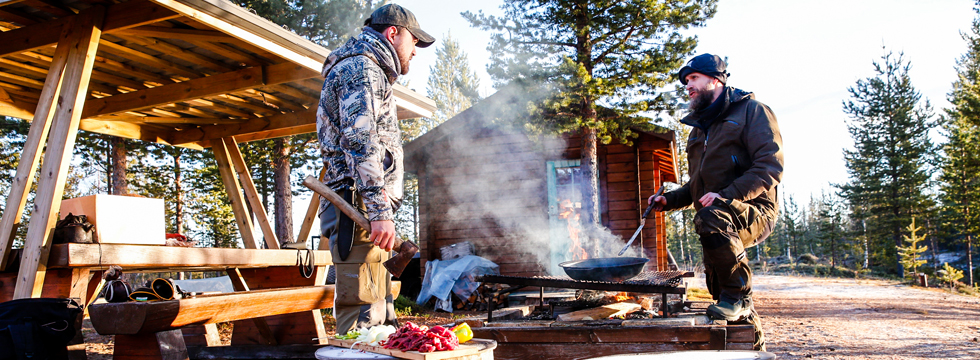
For what distances have you used your riflescope?
In the last hours of our hunt, we spotted the moose calf from some distance away. Moving deep into the darkness of the forrest, it was still easy to spot the moose and give it a well placed shot, using the illuminated reticle. The ability to pinpoint a target at medium range, and finishing the ordeal with a close range shot at lowest magnification, tells you a lot about the versatility and performance of the riflescope.
What was the most important moment for you on this hunting trip?
On a trip like this you experience so many things that you will never forget. But if I have to name one moment that really meant a lot to me, it would be sitting by the river after the moose was down. We had started a small log fire and Tommy had produced dried reindeer meat. Suddenly he exclaimed in his slow northern Swedish accent: “Next time you don’t need a guide my friend. I’ll let you run the dog yourself.” The compliment was not a joke, or a nicety to make a client feel good about himself. It was a simple stated fact, from a man that only says what he means. In the fading sunlight, it was hard not to feel a sting of pride and that I had passed the test as a hunter in this harsh northern land, high above the arctic circle.
Year of the Dog – Part #1 “Difficult choices”
Hunting with a Baying Dog
Swedish Lapland: The Magic of the North
Hunter David Carsten Pedersen speaks about his impressions with the hunting guide Tommy and the baying dog Tiko in swedish Lapland. Tommy has been a guide in Lapland for many years, and is an expert in the ancient skill of hunting moose over baying dogs. The technique used by Scandinavian hunters since the first people came to Europe in the stone ages, has developed a bond between the hunter and the dog where the dog has become a trusted friend and hunting partner.
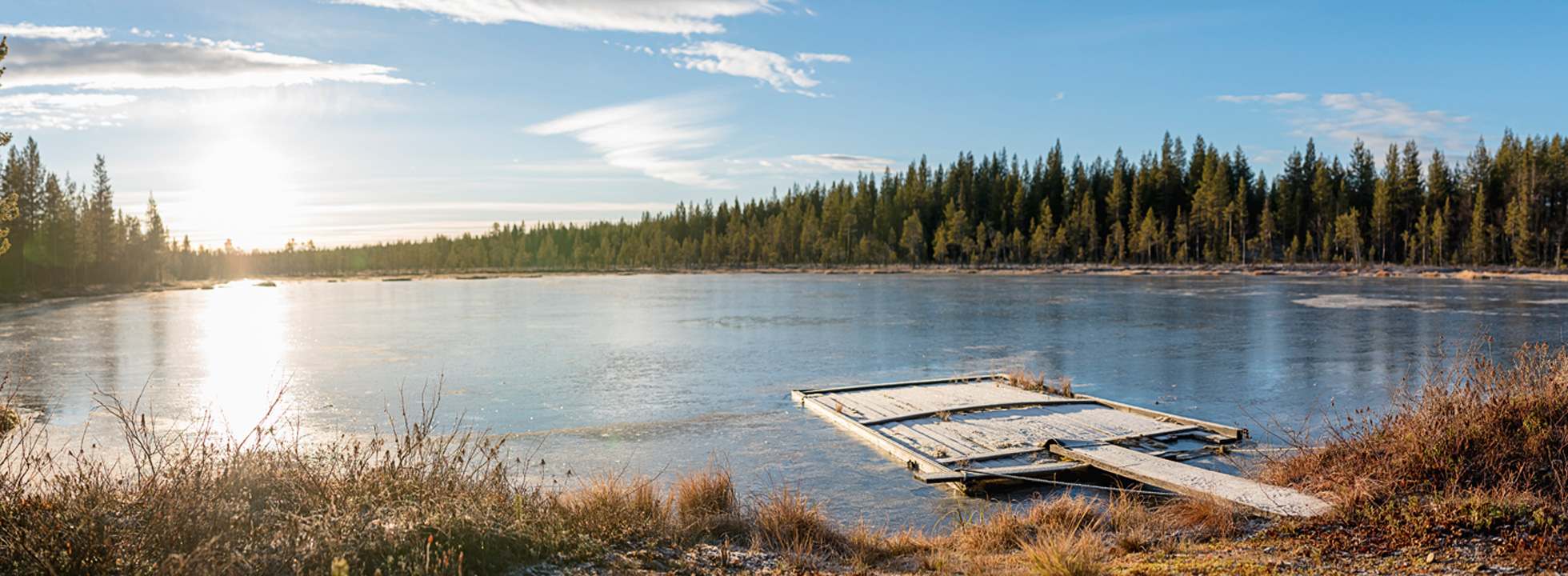
An owl was watching us from a tree this morning. When I see an owl I always find the moose.
After three intensive days the voice oft the barking dog rings out like a concert through the forest. Looking at Tommys GPS, we could see where the dog was barking happily. Somewhere in front of him, the moose had to be standing. Judging from the distance to the dog, we should be able to get to him, before the sun came down. In front of us lay a giant frozen bog, its surface a giant glassy hockey rink. We started to run, keeping our center of gravity low, and our eyes fixed on the sound of that dog in the distance.
People in Lapland have a strong bond with nature. The deep dark sound of a circling raven, made me look up just as we entered the tree line. It seemed to be following us. “A good sign,” I noted to Tommy. “I also got a good signals from the birds.” “An owl was watching us from a tree this morning. When I see an owl I almost always find the moose.” In northern Lapland it’s easy to get a bit superstitious. People up here still have a strong bond with nature.
The moose can’t be far away anymore. With the sky already turning pink this was no time to scorn a good omen. We needed all the help we could get, to crown our hunt for the moose with success. Keeping our bodies completely still, we waited for the sound to come back. The distance to the dog couldn’t be far. The only way to get closer to the moose was to use the sounds of the dogs bark to mask our footsteps in the crunchy, boggy, undergrowth. But the sounds had stopped. “Be ready. He might push them out towards us,” whispered Tommy. Dialing down my VICTORY V8 Driven Hunt riflescope from ZEISS to get the largest possible field of view, I started to prepare myself for that moment where the moose might break.
Suddenly the dog came out of the clearing, running towards us at a steady pace. At first my heart dropped. Why did he loose the moose now? But then I understood. Tiko hadn’t lost it. He just came back to see if we were in position. Soon the barking started again. Something big was coming our way. This was going to be a one shot opportunity.
A perfect hunt.
On the edge of the river, lay the body of a big moose calf. This was the goal we had worked so hard toward. A physical manifestation of the connection between the hunter, the dog, the animals, and a community that relies heavily on our hunt skills to bring home the meat.
“This was a perfect hunt,” Tommy exclaimed. “The meat of the calf is beautiful, and you didn’t hesitate when you had the chance.” Overwhelmed by the compliments of my otherwise stoic hunting partner, I lifted my coffee mug, toasting him, the moose and the dog with the Scandinavian: “Skål.”
In the dying light of the sunset, a raven suddenly came flying out of the forest. Behind it, a small owl following close by. None of us said anything. We just smiled. In Lapland you have to be prepared for anything. Even those things you can’t always explain.
Hunting with Baying Dogs
Alpine hunting in New Zealand
Untouched worlds
In New Zealand there still exist mythical landscapes and breath-taking flora and fauna and let’s not forget it also has the Alps. Our small hunting lodge overlooks the Rangitata River which winds towards the Pacific. The hut is old and not a lodge put up for tourists. The walls are covered in old pictures, trophy bucks on the wall and on the table a few faded hunting magazines. In short: We feel right at home. We, the American Dick Churchley of Red Hawk Rifles, the hunting journalist Mike Schoby, Monty Doboer of Hornady, and myself, Barton Dobbs, Sales Manager of ZEISS USA. Add to that the local “Kiwis” Julian Dann, Darryl Butterick, and Bill Davis of South Canterbury Hunting Safaris.
Despite the cold temperatures sweat is running down my back as we struggle our way uphill in full gear.
New Zealand makes a hunter’s heart beat faster
The region in which we hunted is part of an 8,000 hectare farm with cattle and Merino sheep which has been operated by the same family for generations. You can find tons of salmon and trout in the crystal-clear rivers which thread through this landscape. My hair stands on end just listening to the distant mating call of the stag. The majestic 24 point stags in the fertile valley are our first choice fort he hunt. Stalking Himalaya tahrs in the mountains on the last day is when things really get physically tough. In their Nepalese home, these goat-like animals live in regions at up to 4,400 meters elevation.
We take a break next to a large rock wall and glass the landscape. When we finally reach the ridge the full panoramic view opens up in front of us. Immediately we spot a herd on the gently declining grass mats. Without my ZEISS binoculars we would have to search everything on foot. Now we just have to stalk down there carefully. We take aim. The reticle lies right on a large jet-black Billy goat. His long neck mane blowing in the mountain wind; a surreal image through the crystal-clear ZEISS riflescope. Finally he stands perfectly. I exhale, ignoring exhaustion and excitement, I calmly squeeze the trigger. The crowning conclusion to a perfect hunting experience. The moments in this almost indescribable landscape will stay with me. And I will be back.
Equipment used
Hunting Tahr in New Zealand
Hunting the perfect moment
Interview with photographer and filmmaker Jeff Simpson
US American Jeff Simpson combines his job and passion as a photographer, filmmaker and hunter with his eye for unique moments in the wilderness.
What came first, photography or hunting?
I think hunting was first. I have memories of my grandpa taking me out to Wyoming when I was only 6 to hunt antelope, but photography was not far behind.
And how did you get started with photography and film?
When I was 8 years old, my mother entered an image I took of my dad fishing alongside a pond near our house. It was a nice sunset image that had him silhouetted and it ended up winning. I guess that would qualify as the beginning of my love for the lens.
What is your connection between hunting and photography/film?
I love them both. I started filming hunts back in 2005. What I wanted to do was represent the sport the best I could… in a way that was in line with the passion that drove me outdoors every chance I could be.
Are there some images that are especially dear to you?
That’s a tricky question. I really love Landscape and Wildlife photography. I have a few different elk images that are among my favorites, but I have one snow goose shot that is really nice. There are so many birds captured in the frame that it’s like looking at an abstract painting.
Why do you use ZEISS products for both photography/film and hunting?
ZEISS glass is the end goal for me. On the hunting side, I appreciate the clarity and low light performance. It’s an advantage each time you use your binos or scope. Some of these hunts are really tough, so having great glass saves me steps and I appreciate it. When it comes to photography, the images I get from my ZEISS glass simply make me look better. The accuracy is incredible and I really appreciate them as I take images into the post production process.
What’s so special about ZEISS products?
Performance. Every ZEISS product I have performs beyond my expectations. I wish more products would do that for me.
Each place has its own story and I like to see the beauty in it and share it through the images I capture.
Jeff Simpson
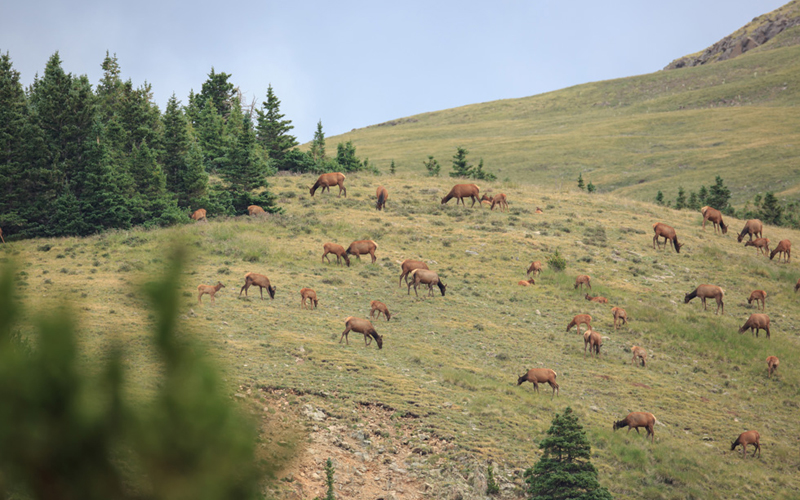
Do you photograph/film during hunts, or do you separate you job from you hobby?
I have been filming and photographing while I hunt for a long time now, but I try to have one hunt a year that is just for me. No camera.
In which countries have you already been active?
I have shot all over the world. Europe, Canada, US, South America and South Africa.
What is your favorite region for hunting and photography/film?
To hunt, I love my home state of Kansas. Managing my farm for mature whitetail to hunt and photo is a life long journey. I’m not sure I truly have a favorite place for photography. Each place has its own story and I like to see the beauty in it and share it through the images I capture.
What makes your photography unique?
Storytelling and realism is what I look for most in my images. Style wise, I have a strong passion for black and white images.
Where did your work already appear?
My work has appeared in multiple mainstream and outdoor magazines and national TV networks such as ESPN, National Geographic and the Outdoor Channel.
Have you won awards for your work?
Most recent award was for the YETI commercial ‘Sword for a Nose’. We won best commercial in the outdoor industry. I was the field producer and camera operator for the spot.
Lost and Found after 10 Years
ZEISS riflescope still working.
Anyone who goes hunting in the mountains must always expect weather changes, which cancel the expedition suddenly and unexpectedly. Sometimes, equipment is left behind. Also during recovering hunted game it can happen that the weapon is misplaced and cannot be found back.

In John Sveen’s case it was much simpler. He took a short break and afterwards he went on without his rifle, a ZEISS scope mounted on the rifle. After nine years, John was amazed when his friend Knut Øyjorda found his gun in the mountains: The wooden stock was bleached out and brittle, the muzzle was rusted and unusable. Only the scope was still like new. The coating withstood the weather, the cold and heat could not harm the optics. The Customer Service in Wetzlar checked the scope in detail and concluded: ZEISS products are indestructible!
Eqipment used
A Hunting Adventure in Canada
The Right Preparation goes Hand in Hand with Extensive Training
For ZEISS Pro Hunter David Carsten Pedersen this dream came true when he went to British Columbia, a province located on the west coast of Canada. “I want to go where I’ve never been, see beyond the horizon and learn as much from nature as it’s willing to show.” In a campfire interview the ZEISS athlete reports on his fascinating trip, about the perfect equipment package for an adventure like this and how to turn your hunting trip into an unforgettable, once in a lifetime experience.
In-Depth Preparation and Planning
A hunt like this, in the backcountry of British Columbia, requires in-depth preparation and planning. Before getting started, you have to think strictly about every little aspect of the journey. What goes in your backpack? What is absolutely essential and what may be expendable? You have to think about weight and about necessities. The right equipment is of the greatest importance, because the whole trip stands and falls with it. The clothing, the rifle, the binoculars, the scope – everything needs to work flawlessly and in all weather conditions. Don’t let sunshine, rain, snow or mist determine your success or failure.
Extensive Training
The right preparation goes hand in hand with . The hunter has to train with the rifle, train with the scope and train at any distance imaginable. For David, this is a really important aspect. “Also train on distances that are that far that you think – OK – this is out of my comfort zone. Because once you’re here, and the chance appears, you don’t want any doubt. You want to know: I can make that shot and I’m going to make that shot.”
Enjoy the Beauty of the Mountains
The most important thing on a wilderness hunt is enjoying it. Enjoy the beauty of the mountains, the freshness of the air and the sounds and smells of nature in its wildest form. Even the smallest things can turn your trip into a valuable memory. Just be open-minded and notice the details of your adventure: the frost that sparkles in the sunshine, a bird you’ve never seen before, the silence and purity of nature. Besides all this, don’t expect everything to be easy, because the tough conditions and the challenges of the wilderness will push you to the limits of your capacity. But exactly that will keep you going and make you even more determined. “Your mind grows higher, your thoughts drift and you become part of your surroundings. But you have to keep your focus, train your eyes and your mind to keep sharp and look for that one crucial detail that determines all the rest.”
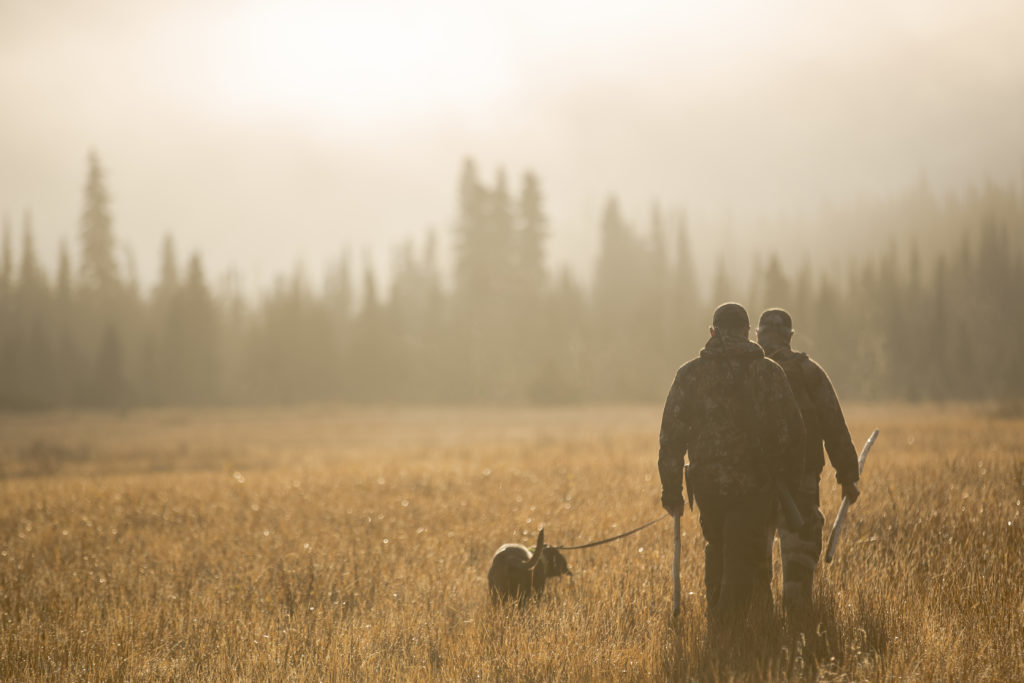
A Wilderness Hunt demands Reliable and Functional Equipment
On his hunting adventure David tested the ZEISS VICTORY SF binoculars and the ZEISS VICTORY V8 1.8-14×50 riflescope. A wilderness hunt demands reliable and functional equipment and the ZEISS premium products fit the hunter’s needs perfectly. “A good pair of binoculars can make the difference between seeing the animal or losing the animal”. On a trip like this, it is important that they are light, fast, easy to use and have a wide field of view. Therefore, the ZEISS VICTORY SF binoculars are absolutely the right choice. They deliver high-contrast, bright images that allow you to see even the finest details in poor light. With a maximum of wearing comfort they are the optimal products for those extra-challenging hunts in tough conditions. David feels totally certain “I can trust them a hundred percent. Even in bad rain and snow, they performed very, very well”.
The Victory V8 is the Ideal Companion in any Situation
The VICTORY V8 1.8-14×50 riflescope also helps David to achieve his goals. Especially the 1.8 magnification enables fast and reliable targeting and quick shots on running game, at short distances as well as at long distances. On a wilderness hunt, the conditions can change in a matter of seconds and you have to be prepared for everything. As a compact all-rounder, the VICTORY V8 is the ideal companion in any situation. No riflescope has ever been this flexible and versatile. The V8 provides an extremely wide range of possible uses and maximum accuracy at any distance. David is obviously impressed: “It’s really amazing to have so many options and so many opportunities in just one package!”
For David Carsten Pedersen, the wilderness hunt in British Columbia was a great adventure and definitely a once in a lifetime experience. “You never know if you’re going to succeed, or maybe you do – because hunting is not about the end, it’s about the moments you experience while you search for other things. It’s about the small things in the big picture and the details in the great story, because in reality, it’s not the goal but the journey that shapes us”.
Equipment used
Sight and Scent Hounds
A hunter’s best friend
Since ancient times, hounds have been faithful partners and have provided great help for hunters. The many different kinds of hunting dogs have been bred as a result of the changing requirements of man. Their tasks vary from fox hunting to deer hunting and from coon hunting to bird hunting, while some hounds have been bred specifically to work in water and some to work on land.
Two categories of hounds
In general, one can sort hunting dogs into two categories: sight hounds and scent hounds. Sight hounds are dogs that primarily hunt by sight and speed. As their name indicates, sight hounds have extremely good vision and are able to detect even the slightest movements. Typical sight hound breeds include for instance the Afghan Hound or the Greyhound. With their long and powerful legs they can outrun almost every fast and agile quarry and are therefore perfect partners for deer hunters. Scent hounds, on the other hand, hunt by following a smell or scent. Thanks to their extremely sensitive nose, they can follow a scent over long distances and even across water. Because of that, they don’t have to keep their quarry in sight. Their strength lies in endurance, not in speed. Most breeds have long, drooping ears which allow them to concentrate fully on the scent. While scent hounds, such as Bloodhounds, Beagles or Foxhounds, are often kept as family pets, they can make up excellent hunting dogs.
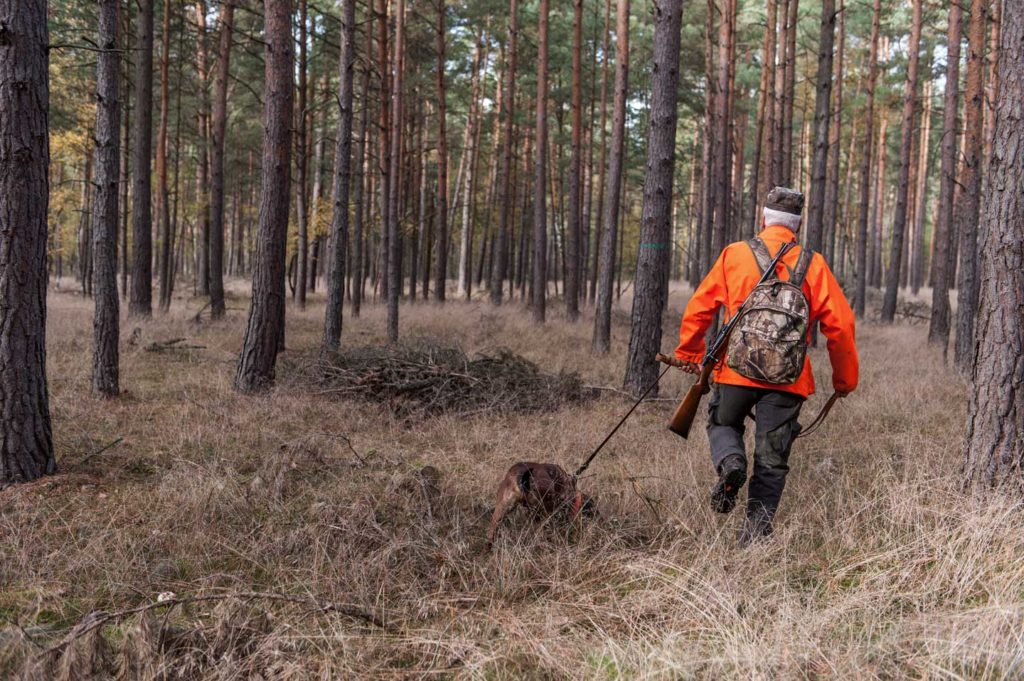
Hounds have boundless energy and need to work. Therefore, proper training is of incredibly important for the hound and for the hunter. The training can vary majorly depending on the target quarry, the type of terrain and the particular breed. One can choose between group training and private training, while training in a group can have a lot of advantages, such as, for example, the exchange between the dog owners. Although many adult dogs are already trained, it is generally advisable to start the training with a puppy. In this way, the hound and its owner form a special bond from the very beginning. This mutual trust and strong relationship between dog and man are crucial for a successful hunt.
No matter whether you decide on a Beagle, a Greyhound, a Foxhound or one of the many other breeds, a hound will not only be a great help for a successful hunt, your four-legged hunting partner will also serve as a loyal and life-long friend.
